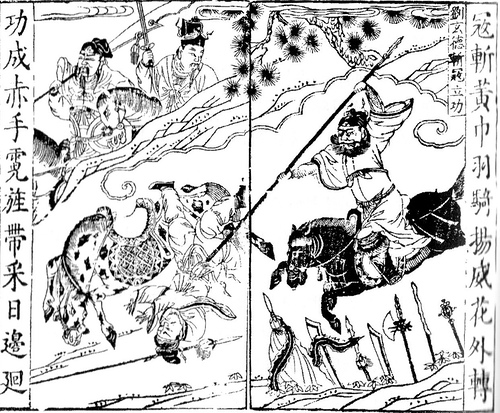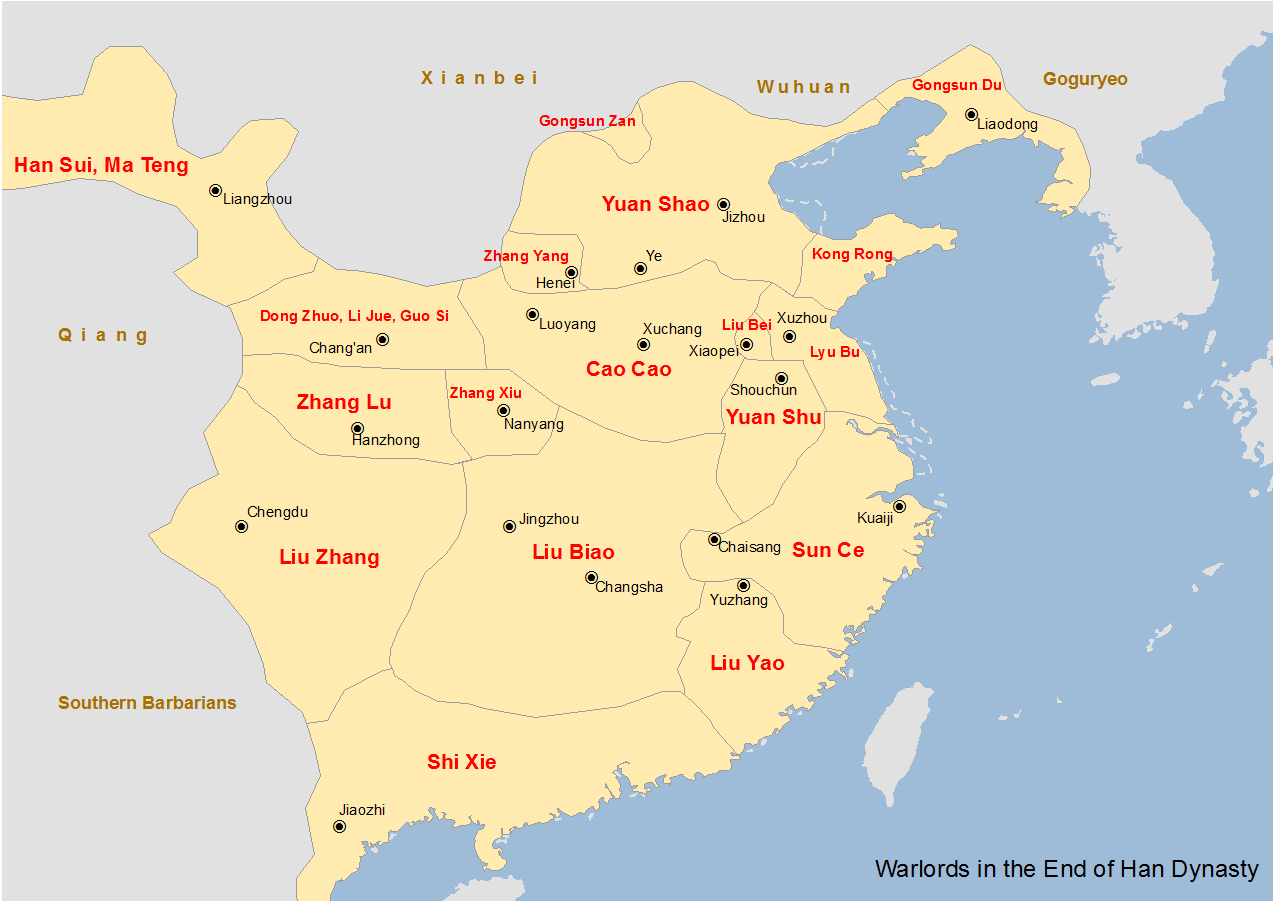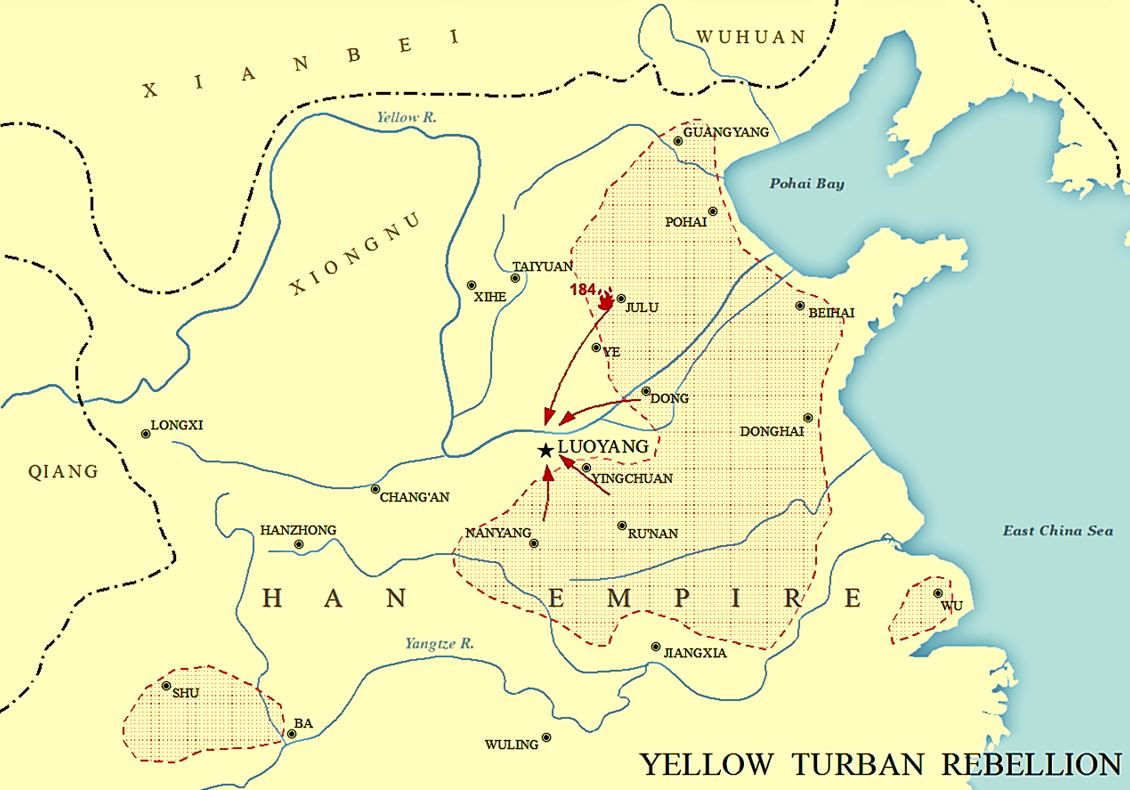|
Ten Attendants
The Ten Attendants, also known as the Ten Eunuchs, were a group of influential eunuch-officials in the imperial court of Emperor Ling ( 168–189) in Eastern Han China. Although they are often referred to as a group of 10, there were actually 12 of them, and all held the position of ''zhong changshi'' (中常侍; "Central Regular Attendant") in Emperor Ling's imperial court. The 12 were: Zhang Rang (張讓), Zhao Zhong (趙忠), Xia Yun (夏惲), Guo Sheng (郭勝), Sun Zhang (孫璋), Bi Lan (畢嵐), Li Song (栗嵩), Duan Gui (段珪), Gao Wang (高望), Zhang Gong (張恭), Han Kui (韓悝) and Song Dian (宋典).(張讓者,潁川人;趙忠者,安平人也。 ... 是時讓、忠及夏惲、郭勝、孫璋、畢嵐、栗嵩、段珪、高望、張恭、韓悝、宋典十二人,皆為中常侍, ...) ''Houhanshu'' vol. 78. Early years Two of the eunuchs, Zhang Rang (張讓) and Zhao Zhong (趙忠), started serving in the Han imperial palace as attendants holding the ... [...More Info...] [...Related Items...] OR: [Wikipedia] [Google] [Baidu] |
Emperor Huan Of Han
Emperor Huan of Han (; 132 – 25 January 168) was the 27th emperor of the Han dynasty after he was enthroned by the Empress Dowager and her brother Liang Ji on 1 August 146. He was a great-grandson of Emperor Zhang. He was the 11th emperor of the Eastern Han dynasty. After Emperor Zhi was poisoned to death by the powerful official Liang Ji in July 146, Liang Ji persuaded his sister, the regent Empress Dowager Liang to make the 14-year-old Liu Zhi, the Marquess of Liwu, who was betrothed to their sister Liang Nüying (), emperor. As the years went by, Emperor Huan, offended by Liang Ji's autocratic and violent nature, became determined to eliminate the Liang family with the help of eunuchs. Emperor Huan succeeded in removing Liang Ji in September 159 but this only caused an increase in the influence of these eunuchs over all aspects of the government. Corruption during this period had reached a boiling point. In 166, university students rose up in protest against the gover ... [...More Info...] [...Related Items...] OR: [Wikipedia] [Google] [Baidu] |
Romance Of The Three Kingdoms
''Romance of the Three Kingdoms'' () is a 14th-century historical novel attributed to Luo Guanzhong. It is set in the turbulent years towards the end of the Han dynasty and the Three Kingdoms period in Chinese history, starting in 184 AD and ending with the reunification of the land in 280 by the Western Jin. The novel is based primarily on the ''Records of the Three Kingdoms'', written by Chen Shou in the 3rd century. The story – part historical and part fictional – romanticises and dramatises the lives of feudal lords and their retainers, who tried to supplant the dwindling Han dynasty or restore it. While the novel follows hundreds of characters, the focus is mainly on the three power blocs that emerged from the remnants of the Han dynasty, and would eventually form the three states of Cao Wei, Shu Han, and Eastern Wu. The novel deals with the plots, personal and military battles, intrigues, and struggles of these states to achieve dominance for almost 100 years. ''Ro ... [...More Info...] [...Related Items...] OR: [Wikipedia] [Google] [Baidu] |
Yellow Turban Rebellion
The Yellow Turban Rebellion, alternatively translated as the Yellow Scarves Rebellion, was a peasant revolt during the late Eastern Han dynasty of ancient China. The uprising broke out in 184 CE, during the reign of Emperor Ling. Although the main rebellion was suppressed by 185 CE, it took 21 years for full suppression of resistant areas and emerging rebellions by 205 CE. The weakening of the imperial court and the rising political influence of ultra-autonomous regional military-governors, who helped suppress the rebellion, eventually led to rampant warlord dominance and the resultant Three Kingdoms period. The rebellion, which got its name from the color of the rebels' headwear ( ''jīn'', defined as more of a scarf than the turban of South Asia) marked an important point in the history of Taoism due to the rebel leaders' association with the then secret Taoist societies. The revolt was also used as the opening event in the 14th-century historical novel '' Romance of ... [...More Info...] [...Related Items...] OR: [Wikipedia] [Google] [Baidu] |
Dong Zhuo
Dong Zhuo () (c. 140s – 22 May 192), courtesy name Zhongying, was a Chinese military general, politician, and warlord who lived in the late Eastern Han dynasty. At the end of the reign of the Eastern Han, Dong Zhuo was a general and powerful minister of the imperial government. Originally from Liang Province, Dong Zhuo seized control of the imperial capital Luoyang in 189 when it entered a state of turmoil following the death of Emperor Ling of Han and a massacre of the eunuch faction by the court officials led by General-in-Chief He Jin. Dong Zhuo subsequently deposed Liu Bian (Emperor Shao) and replaced him with his half-brother, the puppet Emperor Xian to make him become the de facto ruler of China in the boy-emperor's name. The Eastern Han dynasty regime survived in name only. Dong Zhuo's rule was brief and characterized by cruelty and tyranny. In the following year, a coalition of regional officials (; ''cishi'') and warlords launched a campaign against him. Failing ... [...More Info...] [...Related Items...] OR: [Wikipedia] [Google] [Baidu] |
Yuan Shu
Yuan Shu () (155 – 199), courtesy name Gonglu, was a Chinese military general, politician, and warlord who lived during the late Eastern Han dynasty. He rose to prominence following the collapse of the Han central government in 189. He declared himself Emperor of China in 197 under the short-lived Zhong dynasty, two years before his death in 199. Life Early life Yuan Shu was from Ruyang County (), Runan Commandery, which is in present-day Shangshui County, Henan. His family had for over four generations been a prominent force in the Han civil service, having produced numerous members in high positions since the first century CE. Descended from Yuan An, who served during the reign of Emperor Zhang, Yuan Shu was a son of the Minister of Works Yuan Feng () and his principal wife. Yuan Shu is sometimes described to be a younger cousin(绍之从弟也) ''Sanguozhi'' vol. 6. of the warlord Yuan Shao, but was actually Yuan Shao's younger half-brother. As a young man he gain ... [...More Info...] [...Related Items...] OR: [Wikipedia] [Google] [Baidu] |
Yuan Shao
Yuan Shao (, ; died 28 June 202), courtesy name Benchu (), was a Chinese military general, politician, and warlord who lived in the late Eastern Han dynasty. He occupied the northern territories of China during the civil wars that occurred towards the end of the Han dynasty. He was also an elder half-brother of Yuan Shu, a warlord who controlled the Huai River region, though the two were not on good terms with each other. One of the most powerful warlords of his time, Yuan Shao spearheaded a Campaign against Dong Zhuo, coalition of warlords against Dong Zhuo, who held Emperor Xian of Han, Emperor Xian hostage in the imperial capital, Luoyang, but failed due to internal disunity. In 200, he launched a campaign against his rival Cao Cao but was defeated at the Battle of Guandu. He died of illness two years later in Ye (ancient China), Ye. His eventual failure despite his illustrious family background and geographical advantages was commonly blamed on his indecisiveness and inabil ... [...More Info...] [...Related Items...] OR: [Wikipedia] [Google] [Baidu] |
He Jin
He Jin () (died 22 September 189), courtesy name Suigao, was a Chinese military general and politician. He was the military Grand Marshal and regent of the late Eastern Han dynasty of China. He was an elder half-brother of Empress He (the empress consort of Emperor Ling), and a maternal uncle of Emperor Shao. In 189, he and his sister shared power as regents when the young Emperor Shao was put on the throne following Emperor Ling's death. During the time, the conflict between He Jin and the influential eunuch faction intensified. After they overheard a conversation between He Jin and the empress dowager, the eunuch faction lured him into a trap in the imperial palace and assassinated him. While He Jin's subordinates, led by the warlord Yuan Shao, slaughtered the eunuch faction in revenge, the warlord Dong Zhuo took advantage of the power vacuum to enter the imperial capital Luoyang and seize control of the Han central government. Dong Zhuo's seizure of control and the subs ... [...More Info...] [...Related Items...] OR: [Wikipedia] [Google] [Baidu] |
End Of The Han Dynasty
The end of the (Eastern) Han dynasty was the period of History of China, Chinese history from 189 to 220 CE, roughly coinciding with the tumultuous reign of the Han dynasty's last ruler, Emperor Xian of Han, Emperor Xian. It was followed by the Three Kingdoms era (220–280 CE). During the end of the Han dynasty, the country was thrown into turmoil by the Yellow Turban Rebellion (184–205). Meanwhile, the Han Empire's institutions were destroyed by the warlord Dong Zhuo and fractured into regional regimes ruled by various warlords, some of whom were nobles and officials of the Han imperial court. The warlord Cao Cao took control of Emperor Xian and his court in 196 and began gradually reunifying the empire. Cao Cao ostensibly operated under Emperor Xian's rule, though in reality the emperor was a hostage. Cao Cao's efforts to reunify China were rebuffed at the Battle of Red Cliffs in 208-209, when his armies were defeated by the allied forces of Sun Quan and Liu Bei. The Han d ... [...More Info...] [...Related Items...] OR: [Wikipedia] [Google] [Baidu] |
Cash (Chinese Coin)
The cash or ''qian'' was a type of coin of China and the East Asian cultural sphere, Sinosphere, used from the 4th century BCE until the 20th century, characterised by their round outer shape and a square center hole ( zh, c=方穿, poj=hong-chhoan, j=fong1 cyun1, p=fāng chuān). Originally cast during the Warring States period, these coins continued to be used for the entirety of Imperial China. The last Chinese cash coins were cast in the first year of the Republic of China (1912–49), Republic of China. Generally most cash coins were made from copper or bronze alloys, with iron, lead, and zinc coins occasionally used less often throughout Chinese history. Rare silver and gold cash coins were also produced. During most of their production, cash coins were Cast coinage, cast, but during the late Qing dynasty, Milled coinage, machine-struck cash coins began to be made. As the cash coins produced over Chinese history were similar, thousand year old cash coins produced during the ... [...More Info...] [...Related Items...] OR: [Wikipedia] [Google] [Baidu] |
Luoyang
Luoyang ( zh, s=洛阳, t=洛陽, p=Luòyáng) is a city located in the confluence area of the Luo River and the Yellow River in the west of Henan province, China. Governed as a prefecture-level city, it borders the provincial capital of Zhengzhou to the east, Pingdingshan to the southeast, Nanyang to the south, Sanmenxia to the west, Jiyuan to the north, and Jiaozuo to the northeast. As of December 31, 2018, Luoyang had a population of 6,888,500 inhabitants with 2,751,400 people living in the built-up (or metro) area made of the city's five out of six urban districts (except the Jili District not continuously urbanized) and Yanshi District, now being conurbated. By the end of 2022, Luoyang Municipality had jurisdiction over 7 municipal districts, 7 counties and 1 development zone. The permanent population is 7.079 million. Situated on the central plain of China, Luoyang is among the oldest cities in China and one of the cradles of Chinese civilization. It is the earl ... [...More Info...] [...Related Items...] OR: [Wikipedia] [Google] [Baidu] |
Mace (unit)
A mace (; Hong Kong English usage: tsin; Southeast Asian English usage: chee) is a traditional Chinese measurement of weight in East Asia that was also used as a currency denomination. It is equal to 10 candareens and is of a tael or approximately 3.78 grams. A troy mace is approximately 3.7429 grams. In Hong Kong, one mace is grams. and in Ordinance 22 of 1884, it is ounces avoirdupois. In Singapore, one mace (referred to as chee) is grams. In imperial China, 10 candareens equaled 1 mace which was of a tael and, like the other units, was used in weight-denominated silver currency system. A common denomination was 7 mace and 2 candareens, equal to one silver Chinese yuan. Name Like other similar measures such as tael and catty, the English word "mace" derives from Malay, in this case through Dutch ''maes'', plural ''masen'', from Malay ''mas'' which, in turn, derived from Sanskrit ' (), a word related to "mash," another name for the urad bean, and masha, a traditional I ... [...More Info...] [...Related Items...] OR: [Wikipedia] [Google] [Baidu] |
Liang Province
Liang Province or Liangzhou () was a province in the northwest of ancient China, in the approximate location of the modern-day province of Gansu. It was bordered in the east by Sili Province. History Establishment The province was first conquered by the Han Chinese in the 120s BCE during the Han–Xiongnu War, and settled in the decades thereafter. The Hexi Corridor served to connect China proper with the Western Regions, which helped secure important parts of the Silk Road into Central Asia. Qiang rebellions In 107 CE, the Xianlian Qiang rebelled against Han authority. After heavy fighting, and proposals to abandon Liang Province, this First Great Qiang Rebellion was quelled in 118. Efforts were made to resettle the province from 129 to 144, although large parts of Liang remained without effective government. General Duan Jiong conducted another successful campaign against Qiang rebels in 167–169, committing a massacre at Shoot-Tiger Valley. End of Han rule In 1 ... [...More Info...] [...Related Items...] OR: [Wikipedia] [Google] [Baidu] |







